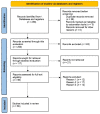A Systematic Review of Atopic Dermatitis: The Intriguing Journey Starting from Physiopathology to Treatment, from Laboratory Bench to Bedside
- PMID: 36359220
- PMCID: PMC9688004
- DOI: 10.3390/biomedicines10112700
A Systematic Review of Atopic Dermatitis: The Intriguing Journey Starting from Physiopathology to Treatment, from Laboratory Bench to Bedside
Abstract
Atopic dermatitis (AD) is a common chronic inflammatory and immune-mediated skin disease with a complex pathophysiology and still represents a therapeutic challenge, owing to limited responses to available treatments. However, recent advances in the understanding of AD pathophysiology have led to the discovery of several new potential therapeutic targets, and research in the field of new molecules with therapeutic perspectives is boiling, with more than 70 new promising drugs in development. The aim of this systematic review is to provide the state of the art on the current knowledge concerning the pathophysiology of the disease and on novel agents currently being investigated for AD, and to highlight which type of evolution is going to take place in therapeutic approaches of atopic dermatitis in the coming years.
Keywords: atopic dermatitis; biologics; novel treatments; pathophysiology; small molecules.
Conflict of interest statement
The authors declare no conflict of interest.
Figures
References
-
- Arksey H., O’Malley L. Scoping studies: Towards a methodological framework. Int. J. Soc. Res. Methodol. 2005;8:19–32. doi: 10.1080/1364557032000119616. - DOI
Publication types
LinkOut - more resources
Full Text Sources


